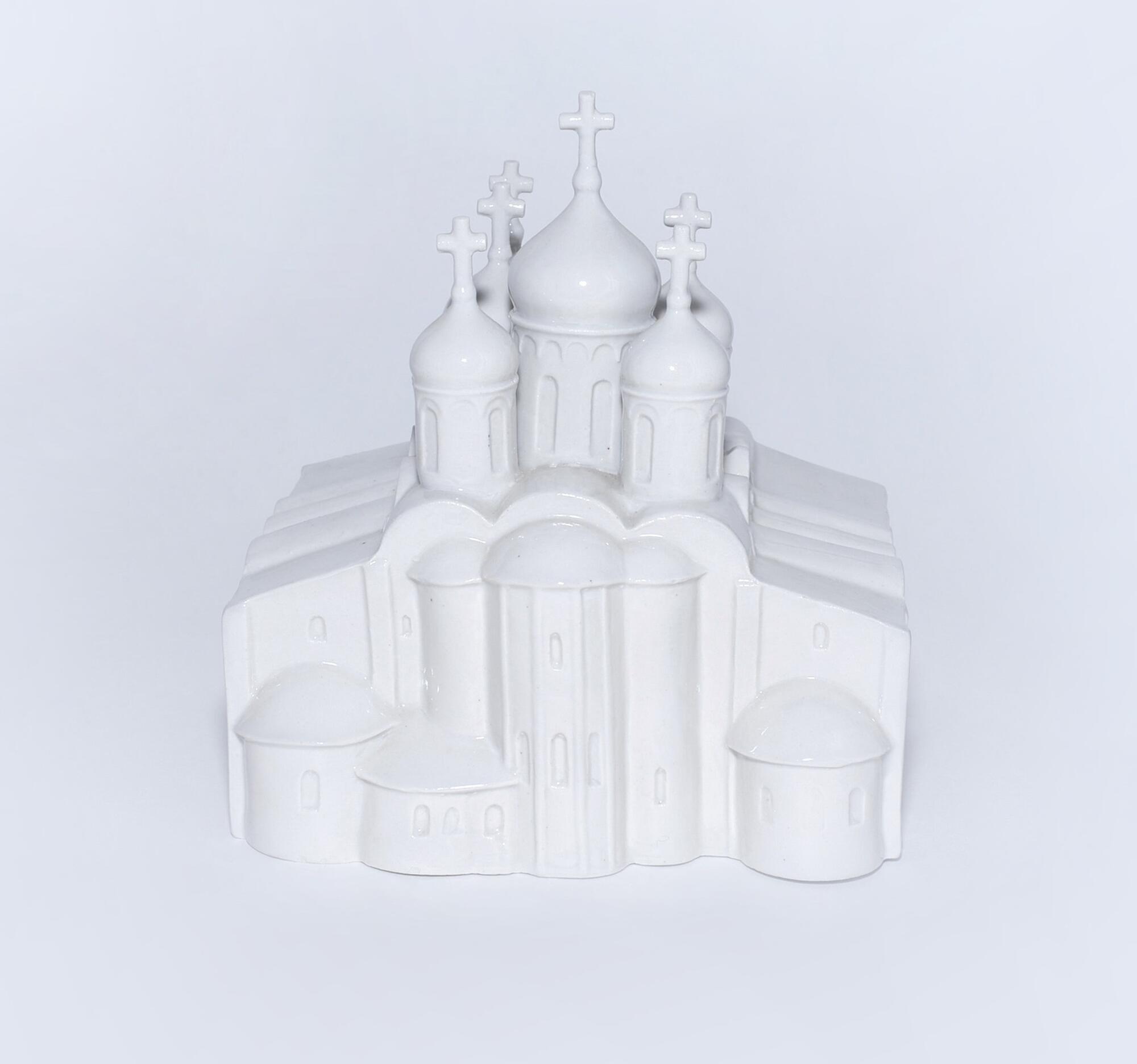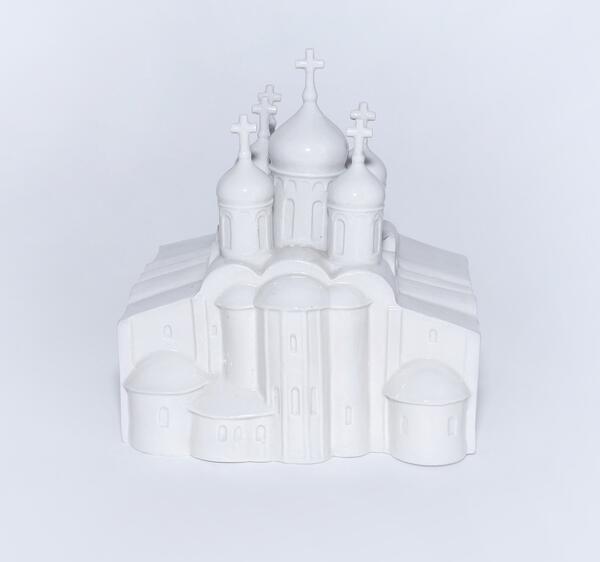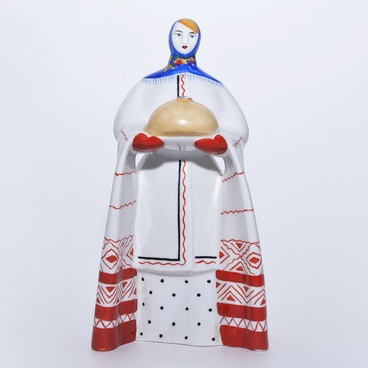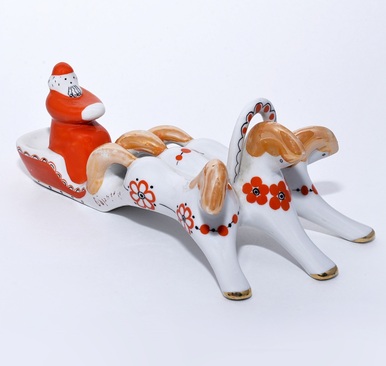The tabletop porcelain sculpture was created in the early 2000s. It depicts the Cathedral of St. Sophia in Veliky Novgorod, the oldest monument of stone architecture in the north of Russia. It was built by Prince Vladimir Yaroslavich, the son of Yaroslav the Wise, in 1045 — 1050. Already in the 1130s, the church became the main cathedral in Veliky Novgorod, and a saying appeared among the locals, “Where St. Sophia is, there is Novgorod!”
The Cathedral of St. Sophia in Novgorod was similar to its namesake and contemporary in Kyiv. However, the architects added some original details to the Novgorod church. One of the examples is the Martirievskaia Porch, an open area in front of the entrance to the church, a place for the tombs of bishops and princes. For better acoustics, the architects inserted acoustic pots (“gorshki-golosniki”) into the walls and vaults of the cathedral — this helped to reduce structural weight in the upper part of the building and absorb the echoes.
The medieval residents of Novgorod left many inscriptions on the cathedral’s walls. These were names, crosses, prayers, and requests for commemoration, images of people and animals, and rebuses. Among them was a pagan funerary text of the 12th — 13th century, which had been crossed out but survived to the present day. In addition, the image of Saints Constantine and Helen, Equal-to-the-Apostles, has been preserved in the cathedral. Researchers believe that this is the only surviving church mural of the 11th century in Russia.
In the 11th century, the icons formed a low barrier in the Cathedral of St. Sophia, which gradually turned into a high iconostasis with five tiers. Initially, there were four icons in the church, but only one of them has survived to this day — the 11th-century icon of the Apostles Peter and Paul. Nowadays, it is housed in the Novgorod Museum. The earliest icons that can be seen in the church today were painted in the 15th century. They are located in the first and second tiers.
After the Bolshevik revolution, an anti-religious museum was opened in the cathedral, and during the occupation of Novgorod, the Nazi troops plundered the church. They took the iconostasis and crosses as spoils of war. After the war, the cathedral was restored and assigned to the Novgorod Museum-Reserve and in 1991, it was returned to the Russian Orthodox Church.
The Cathedral of St. Sophia in Novgorod was similar to its namesake and contemporary in Kyiv. However, the architects added some original details to the Novgorod church. One of the examples is the Martirievskaia Porch, an open area in front of the entrance to the church, a place for the tombs of bishops and princes. For better acoustics, the architects inserted acoustic pots (“gorshki-golosniki”) into the walls and vaults of the cathedral — this helped to reduce structural weight in the upper part of the building and absorb the echoes.
The medieval residents of Novgorod left many inscriptions on the cathedral’s walls. These were names, crosses, prayers, and requests for commemoration, images of people and animals, and rebuses. Among them was a pagan funerary text of the 12th — 13th century, which had been crossed out but survived to the present day. In addition, the image of Saints Constantine and Helen, Equal-to-the-Apostles, has been preserved in the cathedral. Researchers believe that this is the only surviving church mural of the 11th century in Russia.
In the 11th century, the icons formed a low barrier in the Cathedral of St. Sophia, which gradually turned into a high iconostasis with five tiers. Initially, there were four icons in the church, but only one of them has survived to this day — the 11th-century icon of the Apostles Peter and Paul. Nowadays, it is housed in the Novgorod Museum. The earliest icons that can be seen in the church today were painted in the 15th century. They are located in the first and second tiers.
After the Bolshevik revolution, an anti-religious museum was opened in the cathedral, and during the occupation of Novgorod, the Nazi troops plundered the church. They took the iconostasis and crosses as spoils of war. After the war, the cathedral was restored and assigned to the Novgorod Museum-Reserve and in 1991, it was returned to the Russian Orthodox Church.



